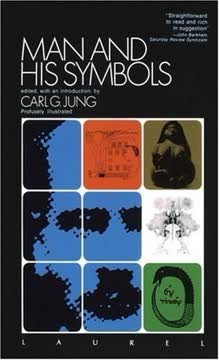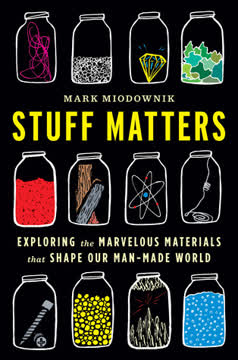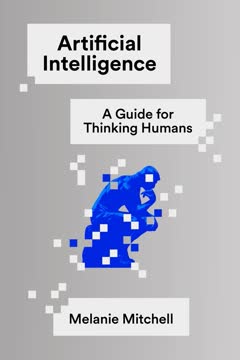نکات کلیدی
1. تنهایی خلاقیت و خودشناسی را پرورش میدهد
تنها زمانی که در تنهایی هستیم (به عبارت دیگر، در حضور کسی) نوزاد میتواند زندگی شخصی خود را کشف کند.
توانایی تنهایی: توانایی تنها بودن جنبهای حیاتی از بلوغ عاطفی و توسعه خلاقیت است. این مهارت در دوران کودکی پرورش مییابد، زمانی که کودک احساس امنیت کافی دارد تا دنیای درونی خود را در حضور یک مراقب که مزاحمتی ایجاد نمیکند، کاوش کند.
مزایای تنهایی:
- تسهیل در خوداندیشی و دروننگری
- امکان تمرکز بدون وقفه بر فعالیتهای خلاقانه
- ترویج توسعه صدای منحصر به فرد و دیدگاه خاص
- امکان پردازش تجربیات و احساسات
تنهایی نباید با تنهایی اجتماعی یا انزوا اشتباه گرفته شود. بلکه، این یک حالت انتخابی است که به افراد اجازه میدهد با عمیقترین افکار و احساسات خود ارتباط برقرار کنند و رشد شخصی و بیان خلاقانه را پرورش دهند.
2. از دست دادن زودهنگام و انزوا میتواند تخیل را تقویت کند
نوشتن یک حرفه نیست بلکه یک شغل ناشی از ناامیدی است.
خلاقیت جبرانی: تجربیات اولیه از دست دادن، جدایی یا انزوا میتواند منجر به توسعه دنیای درونی غنی در افراد به عنوان یک مکانیزم مقابلهای شود. این اغلب به خلاقیت و ظرفیت تخیلی بالاتر در بزرگسالی ترجمه میشود.
نمونههایی از نویسندگانی که تحت تأثیر از دست دادن زودهنگام قرار گرفتهاند:
- ادوارد لیر: در چهار سالگی از مادرش جدا شد
- رادیار کیپلینگ: در شش سالگی از والدینش دور شد
- پی. جی. وودهوس: در دوران کودکی بین مراقبان جابجا شد
در حالی که این تجربیات میتوانند آسیبزا باشند، اما همچنین میتوانند به عنوان کاتالیزوری برای توسعه یک دیدگاه منحصر به فرد و توانایی تخیلی قوی عمل کنند. توانایی خلق دنیای خیالی یا شخصیتها میتواند منبعی از آرامش و وسیلهای برای پردازش احساسات پیچیده باشد.
3. افسردگی و سوگ میتواند الهامبخش ترمیم خلاقانه باشد
نوشتن یک نوع درمان است؛ گاهی اوقات تعجب میکنم که چگونه همه کسانی که نمینویسند، آهنگ نمیسازند یا نقاشی نمیکنند، میتوانند از جنون، اندوه و ترس وحشت که در وضعیت انسانی نهفته است، فرار کنند.
شفا بخشی خلاق: بسیاری از هنرمندان و نویسندگان از آثار خود به عنوان وسیلهای برای پردازش غم، از دست دادن و افسردگی استفاده میکنند. این فرآیند خلاقانه میتواند به عنوان نوعی خوددرمانی و ترمیم عاطفی عمل کند.
عملکردهای بیان خلاق در مقابله:
- احساس کنترل و تسلط را فراهم میکند
- امکان کاوش و ادغام احساسات دشوار را فراهم میآورد
- معنایی از تجربیات دردناک ایجاد میکند
- راهی برای ارتباط با احساسات پیچیده ارائه میدهد
نمونههای قابل توجه شامل "در یادبود" تنیسون است که در پاسخ به مرگ دوستش نوشته شده و آثار پایانی بتهوون است که در حالی که با ناشنوایی و انزوا دست و پنجه نرم میکرد، ساخته شدهاند.
4. جستجوی انسجام، خالقان درونگرا را به جلو میبرد
خوب است که اجازه ندادم تحت تأثیر قرار بگیرم.
ذهنهای الگو جوی: خالقان بسیار درونگرا اغلب تمایل شدیدی به یافتن نظم، انسجام و معنا در دنیای درونی و بیرونی خود دارند. این جستجو برای درک میتواند تمرکز اصلی کار و زندگی آنها شود.
ویژگیهای خالقان درونگرا:
- تمرکز شدید بر فرآیندهای فکری داخلی
- ترجیح تنهایی و تعامل اجتماعی حداقلی
- تمایل قوی به خودمختاری و استقلال
- گرایش به توسعه سیستمها یا نظریههای جامع
نمونههایی شامل فیلسوفانی مانند کانت و ویتگنشتاین هستند که زندگی خود را به توسعه سیستمهای فلسفی منسجم اختصاص دادند، اغلب به قیمت روابط شخصی.
5. علایق و کار میتواند رضایت بیشتری فراتر از روابط فراهم کند
بنابراین میبینم که هیچ چیز بهتر از این نیست که انسان در کارهای خود شاد باشد؛ زیرا این سهم اوست: زیرا چه کسی او را به دیدن آنچه بعد از او خواهد بود، میآورد؟
منابع جایگزین معنا: در حالی که روابط بین فردی اغلب به عنوان منبع اصلی رضایت از زندگی تأکید میشود، بسیاری از افراد از طریق کار، علایق و فعالیتهای خلاقانه خود رضایت عمیقتری پیدا میکنند.
راههایی که کار و علایق به رفاه کمک میکنند:
- احساس هدف و جهت را فراهم میآورند
- فرصتهایی برای رشد شخصی و بیان خود ارائه میدهند
- احساس تسلط و موفقیت ایجاد میکنند
- امکان توسعه هویت منحصر به فرد را فراهم میآورند
این دیدگاه به چالش میکشد که روابط نزدیک تنها مسیر به سوی خوشبختی هستند و پیشنهاد میکند که یک زندگی متعادل میتواند شامل هر دو ارتباطات شخصی و پیگیریهای فردی باشد.
6. افراد خلاق اغلب دورههای توسعهای متمایزی را تجربه میکنند
هیچ چیزی به شنونده واگذار نمیشود، هیچ تلاشی برای جلب توجه او یا نگهداشتن علاقهاش صورت نمیگیرد. بلکه، آهنگساز با خود ارتباط برقرار میکند یا به دیدگاه خود از واقعیت میاندیشد، به گونهای که گویی به صورت بلند فکر میکند و تنها به جوهر خالص افکار خود و فرآیندهای موسیقایی که آن فکر خود اغلب از آن غیرقابل تشخیص است، توجه دارد.
تکامل خلاق: بسیاری از هنرمندان و متفکران مراحل متمایزی را در توسعه خلاق خود تجربه میکنند که اغلب به عنوان دورههای اولیه، میانی و پایانی دستهبندی میشوند.
ویژگیهای دورههای خلاق:
- اولیه: یادگیری و تسلط بر تکنیکها، تحت تأثیر پیشینیان
- میانی: توسعه صدای منحصر به فرد، اغلب متمرکز بر ارتباط و شناخت
- پایانی: افزایش دروننگری، آزمایش با فرم، کمتر نگران مخاطب
نمونههایی شامل کوارتتهای زهی پایانی بتهوون و رمانهای پایانی هنری جیمز هستند که نشاندهنده یک تغییر قابل توجه از سبکهای قبلی و تمرکز بر کاوش درونی به جای ارتباط خارجی است.
7. جستجوی کمال یک انگیزه انسانی بنیادی است
عشق به سادگی نامی است برای تمایل و جستجوی کمال.
تجربیات وحدتبخش: تمایل انسانی به کمال به طرق مختلفی تجلی مییابد، از عشق رمانتیک تا تجربیات عرفانی از وحدت با جهان.
انواع تجربیات وحدتبخش:
- عاشق شدن
- سرخوشی مذهبی یا معنوی
- لحظات بینش عمیق هنری یا علمی
- احساس ارتباط با طبیعت
این تجربیات عناصر مشترکی دارند، مانند احساس فراتر رفتن، از دست دادن مرزهای خود و احساس هماهنگی با خود و جهان. در حالی که اغلب توسط عوامل خارجی تحریک میشوند، آنها وضعیت درونی از یکپارچگی و کمال را منعکس میکنند که بسیاری آن را به عنوان هدف نهایی وجود انسانی میدانند.
آخرین بهروزرسانی::
FAQ
What's Solitude: A Return to the Self about?
- Exploration of Solitude's Value: The book examines how solitude fosters creativity and self-discovery, contrasting it with the modern focus on interpersonal relationships.
- Creative Individuals' Preference: Storr highlights how thinkers like Descartes and Newton thrived in solitude, suggesting it can be a source of happiness and fulfillment.
- Critique of Psychoanalysis: The author challenges the psychoanalytic view that happiness is solely derived from relationships, emphasizing the importance of personal interests and solitary pursuits.
Why should I read Solitude: A Return to the Self?
- Insight into Creativity: The book offers valuable insights into how solitude enhances creativity, essential for anyone interested in the creative process.
- Challenging Conventional Wisdom: It questions the belief that happiness is primarily found in relationships, encouraging a reevaluation of solitude's role in personal fulfillment.
- Historical and Philosophical Context: Storr uses historical examples and philosophical arguments to enrich understanding of solitude's role throughout history.
What are the key takeaways of Solitude: A Return to the Self?
- Solitude as Happiness: Solitude can lead to profound happiness and self-understanding, contrary to the belief that it equates to loneliness.
- Balance in Life: Storr emphasizes the need for a balance between personal relationships and impersonal interests for a fulfilling life.
- Creativity in Solitude: Many creative individuals find their best work emerges from solitude, highlighting its importance for personal growth.
What are the best quotes from Solitude: A Return to the Self and what do they mean?
- “Conversation enriches the understanding...”: This quote underscores that while social interactions are valuable, solitude is essential for deep thinking and creativity.
- “The burden of value...”: Storr suggests that over-relying on relationships for happiness can lead to disappointment, advocating for a broader view of fulfillment.
- “We must reserve a little back-shop...”: Emphasizes the necessity of personal space and time for self-reflection, vital for mental health and creativity.
How does Anthony Storr define solitude in Solitude: A Return to the Self?
- Positive State: Solitude is defined as a state of being alone that can lead to self-discovery and creativity, not as loneliness.
- Contrast with Isolation: Solitude is a choice fostering growth, while isolation is often imposed and detrimental.
- Essential for Creativity: Solitude is crucial for the creative process, allowing deep engagement with thoughts and ideas.
How does Solitude: A Return to the Self relate solitude to creativity?
- Catalyst for Creativity: Solitude acts as a catalyst, allowing individuals to tap into their imagination and produce their best work.
- Psychological Mechanism: Solitude enables deep reflection and imaginative thought, often hindered in social settings.
- Historical Examples: Figures like Kafka and Beethoven illustrate how isolation can lead to significant artistic breakthroughs.
How does Anthony Storr critique modern views on relationships in Solitude: A Return to the Self?
- Overemphasis on Relationships: Storr critiques the belief that happiness is solely derived from intimate relationships, calling it limiting.
- Value of Impersonal Interests: He emphasizes the importance of solitary pursuits, suggesting they provide significant fulfillment.
- Cultural Shift: Societal changes have increased anxiety about relationships, advocating for a balanced view that includes solitude.
What psychological theories does Anthony Storr reference in Solitude: A Return to the Self?
- Psychoanalytic Critique: Storr critiques Freud's focus on relationships as the primary happiness source, highlighting solitude's value.
- Jungian Concepts: He incorporates Jung's ideas of introversion and extraversion, exploring how temperaments relate to solitude.
- Object-Relations Theory: Discusses how early relationships shape personality, arguing solitude helps reconcile past experiences.
How does Solitude: A Return to the Self address the concept of introversion?
- Introversion and Creativity: Introverts may thrive in solitude, using it for creativity and reflection, finding fulfillment in their inner worlds.
- Psychological Resilience: Introverts develop resilience through solitary experiences, leading to deeper self-understanding.
- Cultural Implications: Storr argues society undervalues introverts' contributions, advocating for appreciating solitude's strengths.
How does childhood experience play into the themes of Solitude: A Return to the Self?
- Impact of Isolation: Childhood isolation can influence creativity, with solitary children developing rich inner lives.
- Formation of Identity: Solitude helps children form a coherent sense of self, crucial for development.
- Long-term Effects: Childhood solitude impacts adult relationships and creativity, highlighting the importance of understanding these dynamics.
How does Anthony Storr differentiate between solitude and loneliness in Solitude: A Return to the Self?
- Solitude as Positive: Solitude is a positive state for self-reflection and creativity, unlike loneliness, which is negative and isolating.
- Psychological Benefits: Solitude increases self-awareness and emotional clarity, while loneliness can lead to depression.
- Coping Mechanisms: Embracing solitude as a coping mechanism can transform it into a source of strength, reducing loneliness.
What is the significance of the title Solitude: A Return to the Self?
- Self-Discovery: The title reflects using solitude to reconnect with one's true self, fostering personal growth.
- Cultural Commentary: Challenges society's emphasis on social interaction, urging reconsideration of solitude's value.
- Integration of Experiences: Suggests integrating past experiences through solitude, leading to a coherent and fulfilled identity.
نقد و بررسی
کتاب تنهایی به خاطر بررسی مزایای بودن در تنهایی، بهویژه برای افراد خلاق، مورد تحسین قرار گرفته است. خوانندگان به چالش استور با این ایده که روابط تنها منبع رضایت هستند، ارج مینهند. تحلیل کتاب از شخصیتهای تاریخی و نظریههای روانشناسی بهعنوان بینشزا تلقی میشود، هرچند برخی آن را تکراری یا بیش از حد متمرکز بر روانتحلیل میدانند. بسیاری از خوانندگان به محتوای کتاب بهطور شخصی ارتباط برقرار میکنند و برای تمایلات تنهایی خود تأییدیهای مییابند. منتقدان به لحن آکادمیک کتاب و کمبود مشاورههای عملی برای افراد عادی اشاره میکنند.
Similar Books









